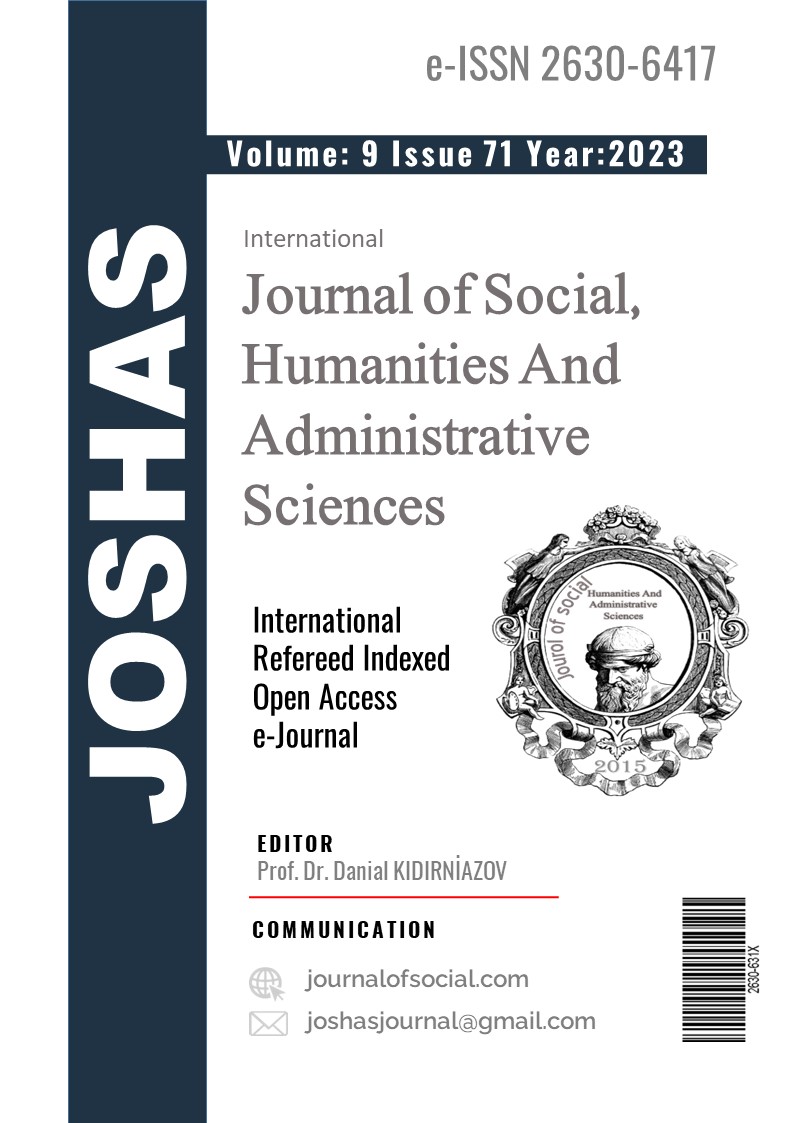Author :
Abstract
Osmanlı toplumu askeri ve reaya olarak ikiye sınıfa ayrılırdı. Kendi içerisinde kalemiye, ilmiye ve seyfiye olarak üçe ayrılan askeri sınıf, yönetici kesimi ifade ederken, reaya ise yönetilen kesimi ifade etmekte idiyse de reaya tabirinden esas kast edilen köylü-üretici kesimdi. Bu kesimin en önemli işi üretim yapmak ve vergi vermek olduğundan işledikleri toprağı terk etmeleri ya da işlememeleri kesinlikle yasaktı. Taşradaki erkânın bilhassa seyfiye tabir edilen askerlerin ücretlerinin ana kaynağı yine köylü kesimdi. Reayanın meşhur Celali isyanlarına katılması tımar sistemini bozarak Osmanlı ordusunu zaafa uğrattığı gibi Osmanlı ekonomisini de alt-üst etti. Devletin hemen her alanda kabuk değiştirdiği II. Mahmud döneminden itibaren köylü-üretici ve askeri-yönetici kesim farkı ortadan kalktı. Artık köylü-üretici kesim farklı meslek erbabı olabilir ya da silahaltına alınıp asker olabilirdi ama bu Osmanlı köylüsüne pek bir şey kazandırmadı.
XIX. yüzyıl sonlarına doğru ise imparatorluk hem içeriden hem dışarıdan tehdit altında idi. Avrupa ve Afrika’daki topraklarının çoğunu kaybetmişti. Anadolu köylüsü ise devletin mali yükünü sırtlanmaktan maada artık askeri yükünü de çeker olmuştu.
İşte bu çalışmada XIX. yüzyıl sonlarında Orta Anadolu köylülerinin sosyo-ekonomik durumuna Orta Anadolu’nun önemli şehirlerinden biri olan Sivas köylüsü özelinden bakılmaya çalışıldı. Bunun için de Osmanlı tarihi araştırmalarının önemli arşiv kaynaklarından biri olan, kadı kaydı ya da şer’iyye sicilleri olarak bilinen, kayıt defterlerinin içerisinde yer alan miras belgelerinden yani tereke kayıtlarından faydalanıldı. 58 No’lu Sivas Şeriyye Sicil defteri içerisindeki 1890 – 1991 tarihli Sivas köylülerine ait seçilmiş terekelerden edinilen bilgiler; başka yardımcı kaynaklarla da desteklenerek, Sivas köylüsünün Aile ve nüfus yapısı ile birlikte ekonomik hayatına ilişkin bulgular paylaşıldı. Hülasa XX. yüzyıl arifesinde Orta – Anadolu nüfusunun çoğunluğunu oluşturan halk kesiminin hali pür meali her yönüyle izah edilmeye çalışıldı.
Keywords
Abstract
Ottoman society was divided into two classes: military and reaya. The military class, whcih was divided into three as kalemiye, ilmiye and seyfiye, referred to the ruling class, while the reaya referred to the ruled class, but what was really meant by the term reaya was the peasant-producer class. Since the most important job of this group was to produce and pay taxes, it was strictly forbidden for them to leave the land they cultivated or not to cultivate. The main source of the salaries of the provincial military officials, especially the soldiers called seyfie, was also the peasantry. The participation of the reaya in the famous Celali rebellions disrupted the fief system, weakening the Ottoman army and upsetting the Ottoman economy. From the Mahmud II period onwards, When the state changed its shell in almost every field, the difference between the peasant-producer and military-administrative sectors disappeared. From then on, the peasant-producer segment could have different profession or be recruited as soldiers, but this did not bring much to the ottoman peasantry.
Towards the end of the 19th century, the empire was under threat both from within and outside. It had lost most of its territories in Europea and Afica. The Anatolian peasantry, in addition to bearing the financial burden of the state, was now also bearing the military burden.
In this study, we have tried to look at the socio-economic situation of Central Anatolian peasants in the late nineteenth century from the perspective of the peasants of Sivas, one of the most important cities of Central Anatolia. For this purpose, the inheritance documents in the registration books known as kadi records or shar’iyye registers, which are one of the important archival sources of Ottoman historical records, were utilized. The information obtained from the selected inheritance records of Sivas villagers dated 1890-1891 in the Sivas Shariyya Registry Book No. 58; supported by other auxiliary sources, findings on the family and population structure of Sivas villagers and their economic life were shared. In short, the situation of the people who constituted the majority of the Central Anatolian population on the eve of the XXth century has been tried to explain in every aspects.





